Recent Articles
Popular Makes
Body Types
10 Things You Need to Know About the 2018 Jeep Wrangler
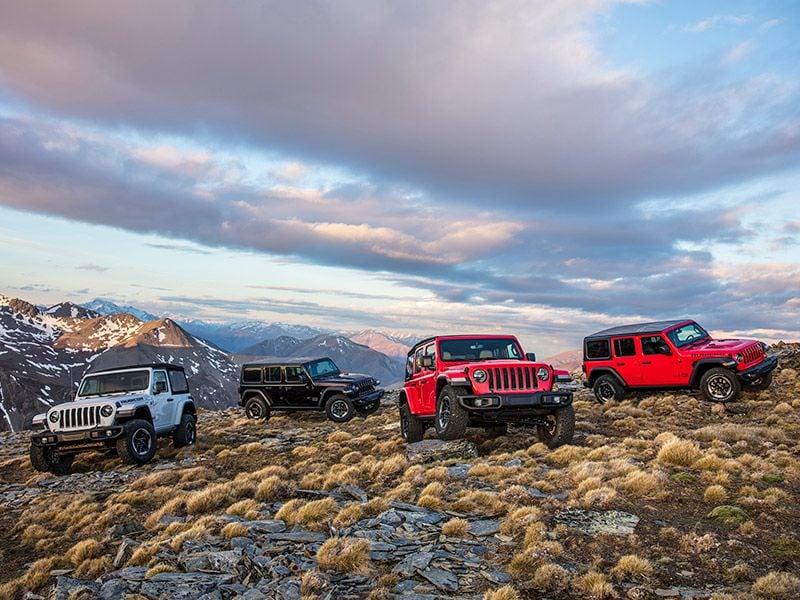
2018 Jeep Wrangler lineup ・ Photo by Fiat Chrysler Automobiles
We’ve waited over a decade for a new Jeep Wrangler and at last, it’s here. The new JL generation, introduced for the 2018 model year, succeeds the JK generation as the icon of the Jeep brand. Developing a new Wrangler is no small task, with a veritable army of enthusiasts begging for new features while demanding others stay precisely the same.
How Jeep has walked this fine line is admirable, with the new Wrangler promising better ride quality, improved technology, and greater off-road capability than ever before — without altering the rig’s classic design and functionality. That’s music to the ears of Wrangler enthusiasts, and a warm welcome to those who might otherwise have shopped the truck’s competitors. Let's go over 10 things you need to know about the new 2018 Wrangler.
1. It’s still a body-on-frame, solid axle beefcake.
Of all the apprehensions Wrangler fans held while awaiting the introduction of the new model, the rumored transition to a unibody or independent axle configuration was the most worrisome. The Wrangler has always been a body-on-frame, solid-axle workhorse — to change up the recipe now would feel sacrilegious. Thankfully, Jeep stuck to its roots and simply improved its hardware. Most importantly, Jeep revised aa troublesome front axle with thicker-wall axle tubes and new C-knuckles that are paired with aluminum steering knuckles. Other tweaks include smaller rack and pinions on both Dana 44 axles and an electronic disconnect on demand of the front axle for improved fuel economy.
Apart from the axles, the five-link coil-sprung suspension is still in use, but the rear shocks have been moved outboard and the track bars are higher for an improved roll center. The body panels are still largely made of steel, but now the doors, hood, and tailgate are all made from aluminum to save weight. Old school grit with innovative engineering — we love it.
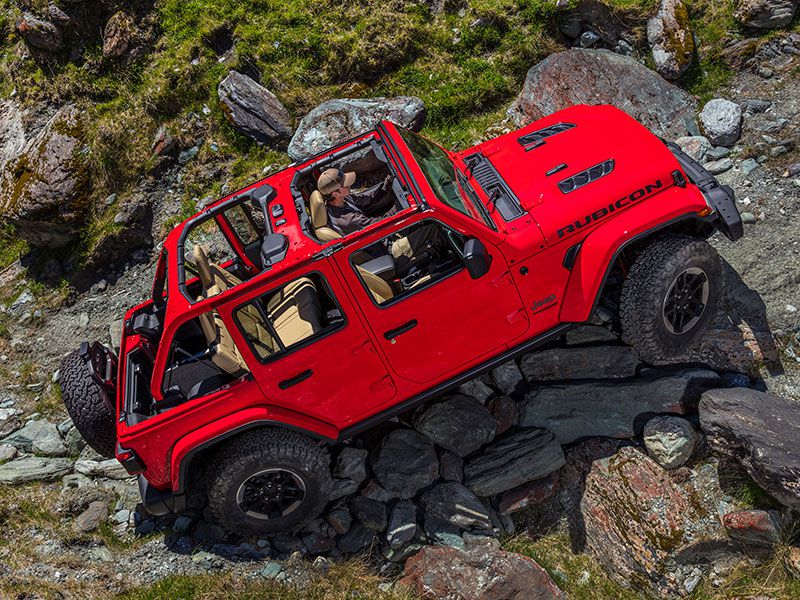
Photo by Fiat Chrysler Automobiles
2. It’s the best-riding Wrangler ever made.
Part of this claim is subjective, but it’s backed up with objective improvements to NVH levels, suspension damping, steering feel, and aerodynamics. The biggest hurdle for many would-be Wrangler owners is its notoriously rough ride and sloppy handling. Some anticipated an independent suspension would appear for 2018 to solve this problem, but Jeep has managed to stick with the Wrangler’s original layout while still improving ride quality tremendously.
Subtle aerodynamic improvements to the bodywork, a tighter turning radius, flatter cornering, and improved transmissions with less noise and vibration pay dividends in daily driving enjoyment. Wrangler owners have always touted their trucks’ off-road capability when faced with difficult questions about ride quality. No more excuses need to be made — this new Wrangler loves pavement and dirt equally.
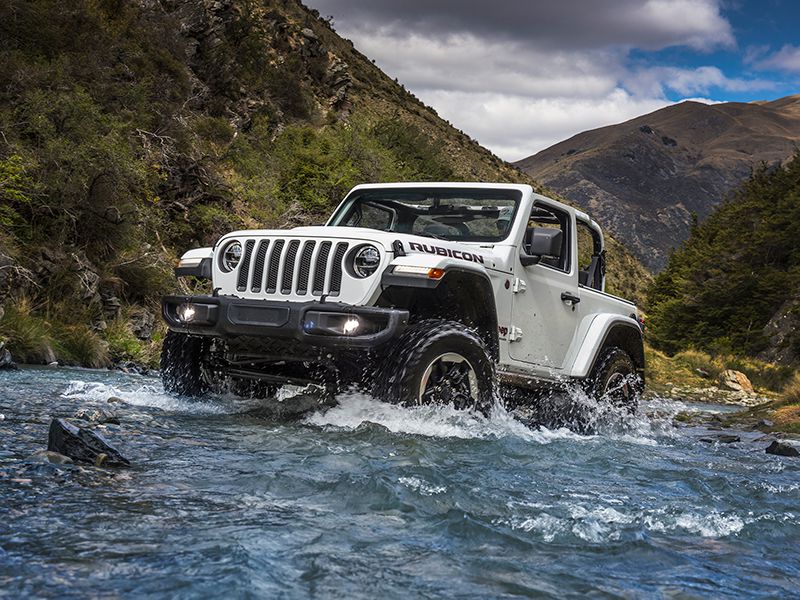
Photo by Fiat Chrysler Automobiles
3. The Rubicon features the Wrangler's largest tires ever fit from the factory.
The Rubicon has always been the most capable Wrangler version out of the box, and the JL generation does the nameplate justice. The laundry list of improvements over the standard Wrangler includes a 4:1 gear ratio, selectable front and rear locking differentials, an electronic disconnecting sway bar, rock sliders, taller fender flares, and the tallest tires even fitted to a production Wrangler.
The new Rubicon wears BFGoodrich All-Terrain T/A KO2s in 33-inch diameter. Not only are they more comfortable and quieter than the outgoing mud-terrain tires, but they’re also a full inch taller. The increase in diameter means greater ground clearance for all your wheeling endeavors. During our time behind the wheel of the Rubicon Unlimited, we found the BFGoodrich tires to grip tremendously well off-road while behaving much the same as a standard all-season tire on-road.
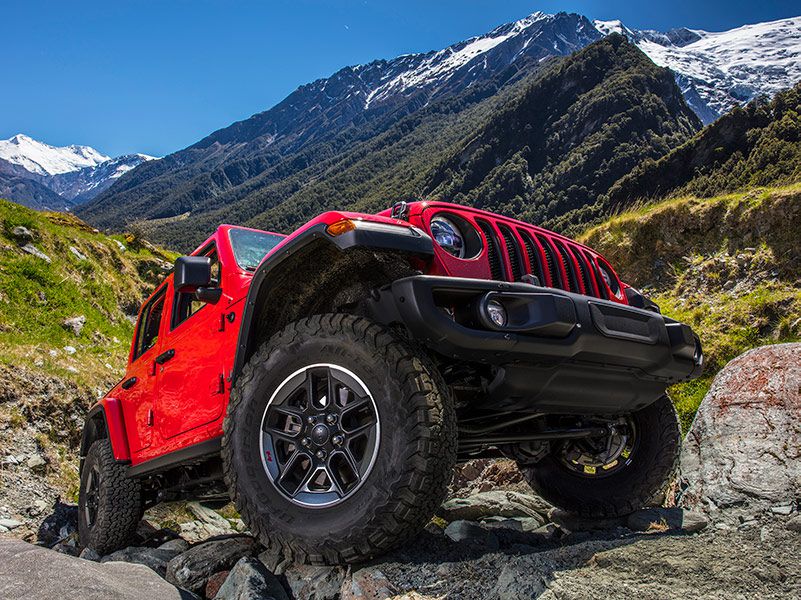
Photo by Fiat Chrysler Automobiles
4. You can still fold down the windshield and take off the doors.
Starting with the Willys MB — the ancestor of our current Wrangler — Jeep’s off-road icon has famously featured a folding windshield. During World War II, the ability to fold down the Jeep's windscreen was basically a necessity for the Army. If mud or other debris covered the glass, the driver or passenger could quickly flip down the whole unit instead of scrambling to clean it (ineffectively) with its tiny windshield wipers.
Today, the Wrangler’s folding windshield is more about honoring the truck’s heritage than using it for similar purposes. Still, Jeep has made the process easier than ever — just four bolts fasten the windshield in place. Another classic Wrangler feature is its removable doors. That too is easier than ever, with redesigned hinges and labeling on the door that indicates the proper tool to remove them.
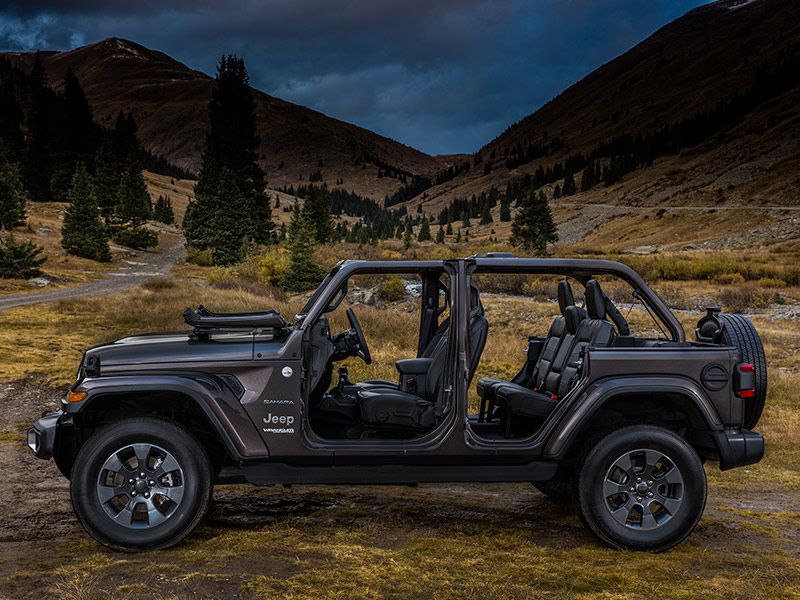
Photo by Jeep
5. The soft top is a cinch to operate.
During the Wrangler’s long tenure, Jeep has used several soft-top designs, yet the process of conversion from top-up to top-down has never felt particularly seamless. The 2018 Wrangler introduces a new soft-top mechanism that is a revelation for anyone who has struggled with previous setups.
To stow the top, one must only unhook two latches beneath the front seat visors, pop out and slide the rear plastic window and two side windows from their housings, push the front of the top skyward, pull a lever at the back of the top, and drag the whole roof into a stowed position in the trunk. Timing ourselves, we did the whole conversion in less than a minute — no joke. Putting the top back up takes a little more effort, but following the steps in reverse gets everything secured in a couple of minutes.
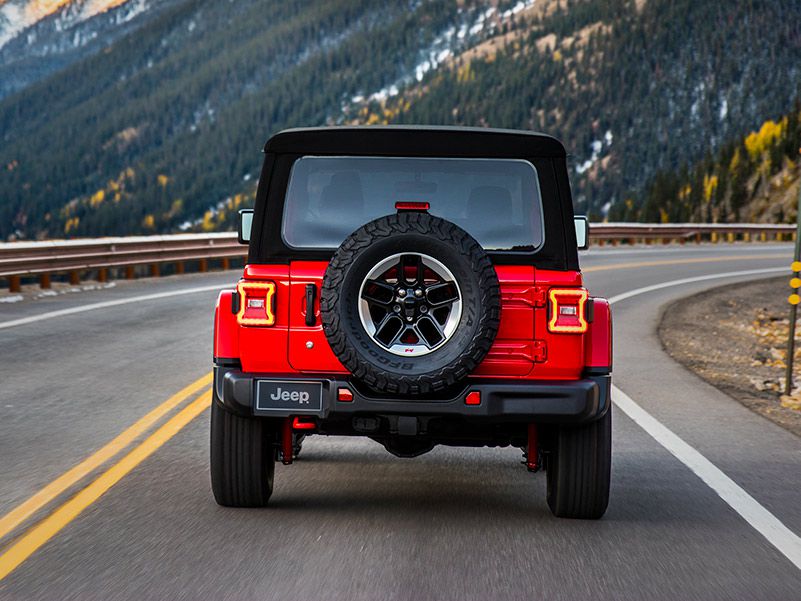
Photo by Fiat Chrysler Automobiles
6. You can get it with a hybrid powertrain.
So far, you’ve probably deduced that the new Wrangler is much like the old, save for some smart improvements. While that is correct, we’re about to throw you a curve ball: The 2018 Wrangler JL now offers a gas-electric hybrid powertrain. The combined output is 268 hp and 295 lb-ft of torque (a bit less power but more torque than the standard 3.0-liter V6 engine).
The electric motor element uses a belt-drive system to develop near-instant torque. The setup features stop/start, electric power assist, intelligent battery charging, and regenerative braking. All these technologies combined lead to improved fuel economy and (Jeep says) better performance off-road. If you’re looking for even more electronic wizardry, a plug-in hybrid Wrangler with an all-electric drive mode is coming sometime next year. A 2.0-liter turbocharged four-cylinder gas engine (another Wrangler first) rounds out the powertrain choices.
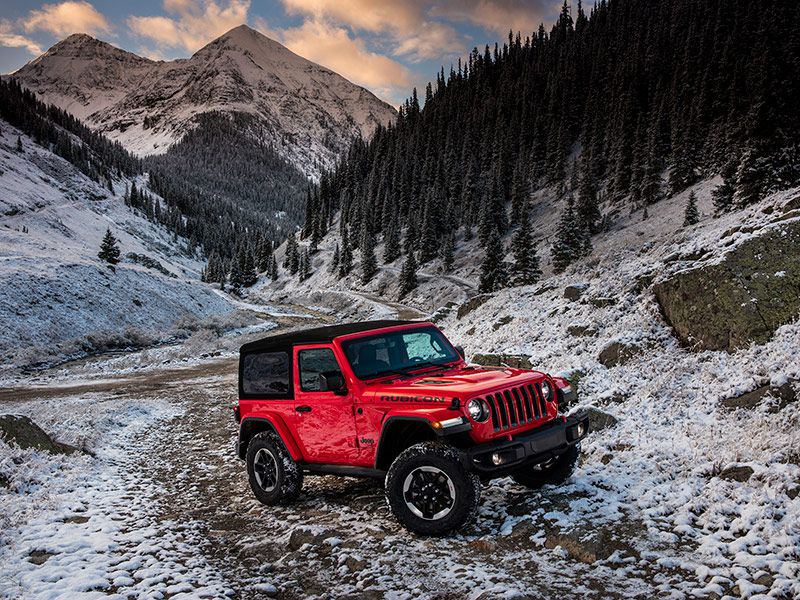
Photo by Fiat Chrysler Automobiles
7. The manual transmission lives on.
Back to our theme of the Wrangler retaining all the best old school parts, another lingering bit of engineering is the manual gearbox. While the JL Wrangler is available with a new eight-speed automatic transmission in every body style and trim, Jeep re-tuned its six-speed manual to pair nicely with its 3.0-liter V6 engine.
Sadly, Jeep doesn’t plan to offer the manual with any other powertrain (including an upcoming diesel engine), but enthusiasts will appreciate the updated gearbox's new linkage, smoother shifts, and reduced vibration.
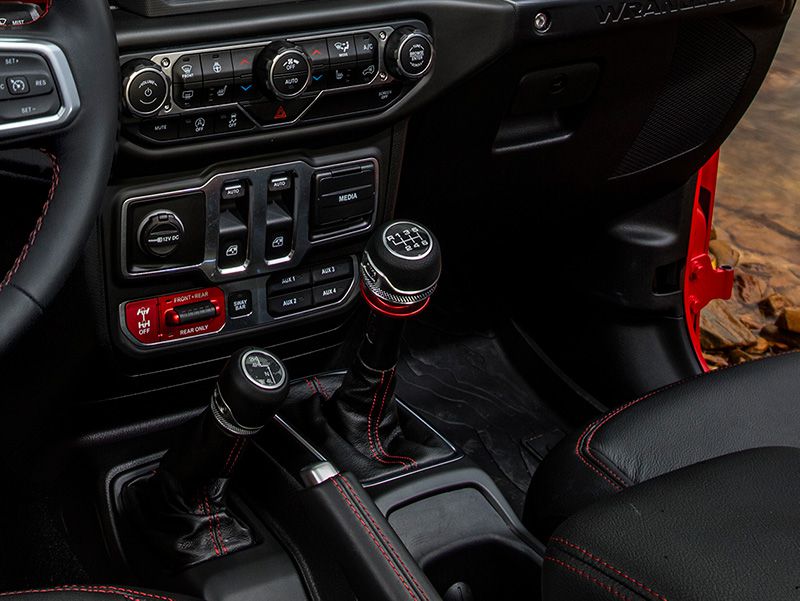
Photo by Fiat Chrysler Automobiles
8. The interior could be confused for a Mercedes-Benz G-Class.
The term “zero to hero” seems appropriate for the transformation that has taken place in the Wrangler’s cabin. In the most polite terms, the Wrangler's interior has always felt cheap, monotonous, and utilitarian. As with the ride quality, fans have always been able to overlook these downsides when appreciating the truck’s capability and cool factor. The new Wrangler, however, offers genuinely pleasant accommodations for all passengers.
Most notably, the JK’s dashboard bulge is gone, replaced by a flat, eye-catching red panel. The effect is a substantially more airy feel to the front cockpit, complemented by increased rear legroom. Other improvements include a 7.0-inch UConnect touchscreen infotainment as standard, a full-color TFT driver display, USB and USB-C ports, leather upholstery, and Apple CarPlay and Android Auto.
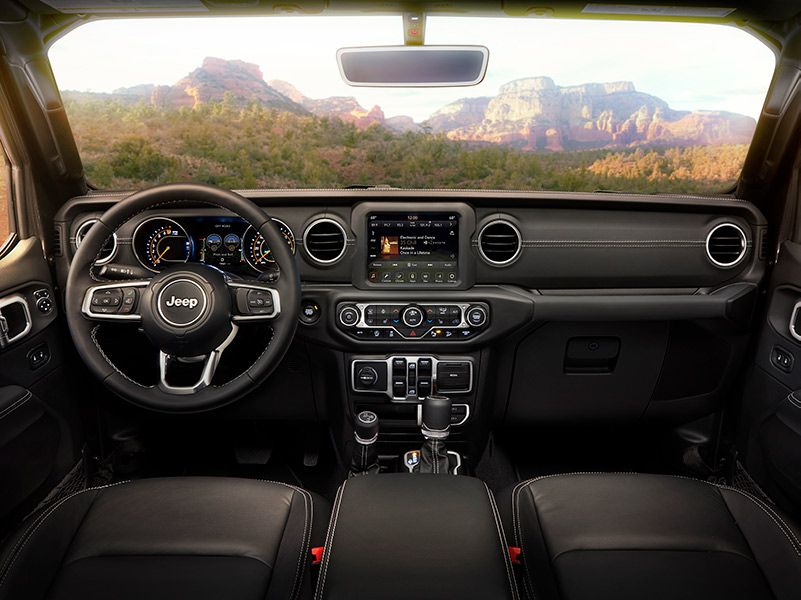
Photo by Fiat Chrysler Automobiles
9. It’s longer and boasts more interior volume.
It’s difficult enough to pick out the visual differences between the new and old Wrangler, but things get even more complicated when asked which is larger. One would be forgiven to assume the boxier JK generation off-roader is larger than the new JL, but it’s the opposite scenario.
With the help of some clever design tricks, Jeep has masked a gain of 2.5 inches in length for two-door models and 3.5-inches in length for four-door (Unlimited) models. Most won’t notice the difference on the road, but inside, passengers will appreciate improved legroom and increased cargo capacity — now up to 32 cubic feet with the rear seat in place.
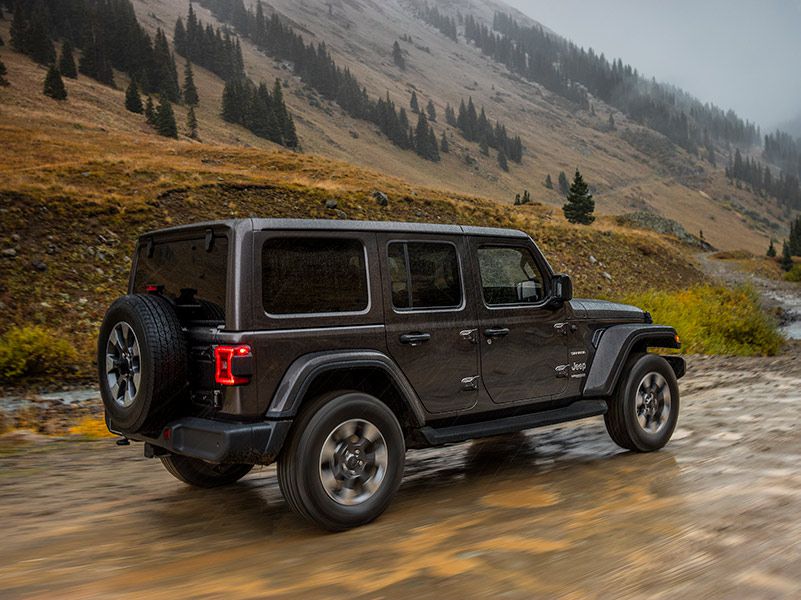
Photo by Fiat Chrysler Automobiles
10. Jeep says it’s more capable off-road than ever before.
Like Jeep’s claims about ride quality — and assurances that the Wrangler JL is more capable than ever — will come down to confidence behind the wheel. Improved hardware certainly backs up Jeep’s analysis, but it’s only when you scamper up obstacles and casually hang a wheel while three others mosey down an embankment that you really believe this is the most hardcore Wrangler yet.
Nothing about the new Wrangler is effortless, but that’s not why people buy this rig in the first place. Owners want to feel they’re working for a payoff, and now that payoff is greater than ever.
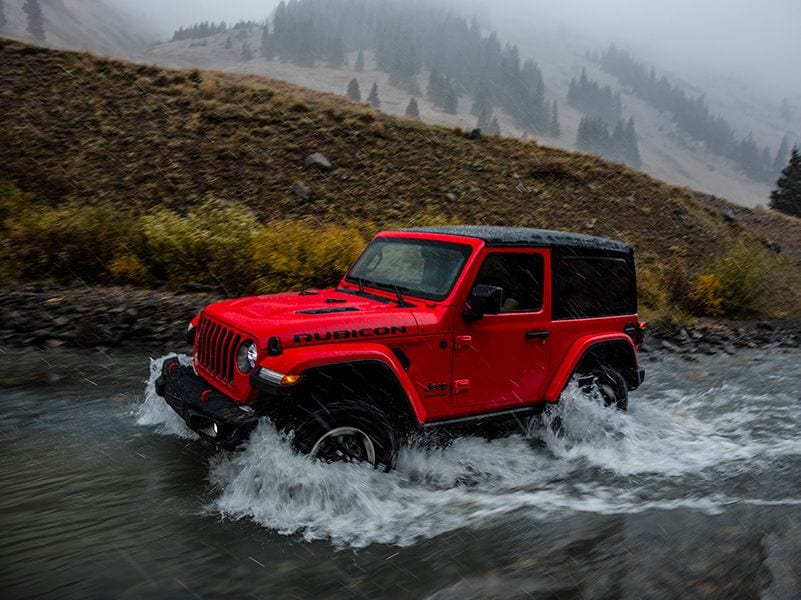
Photo by Fiat Chrysler Automobiles